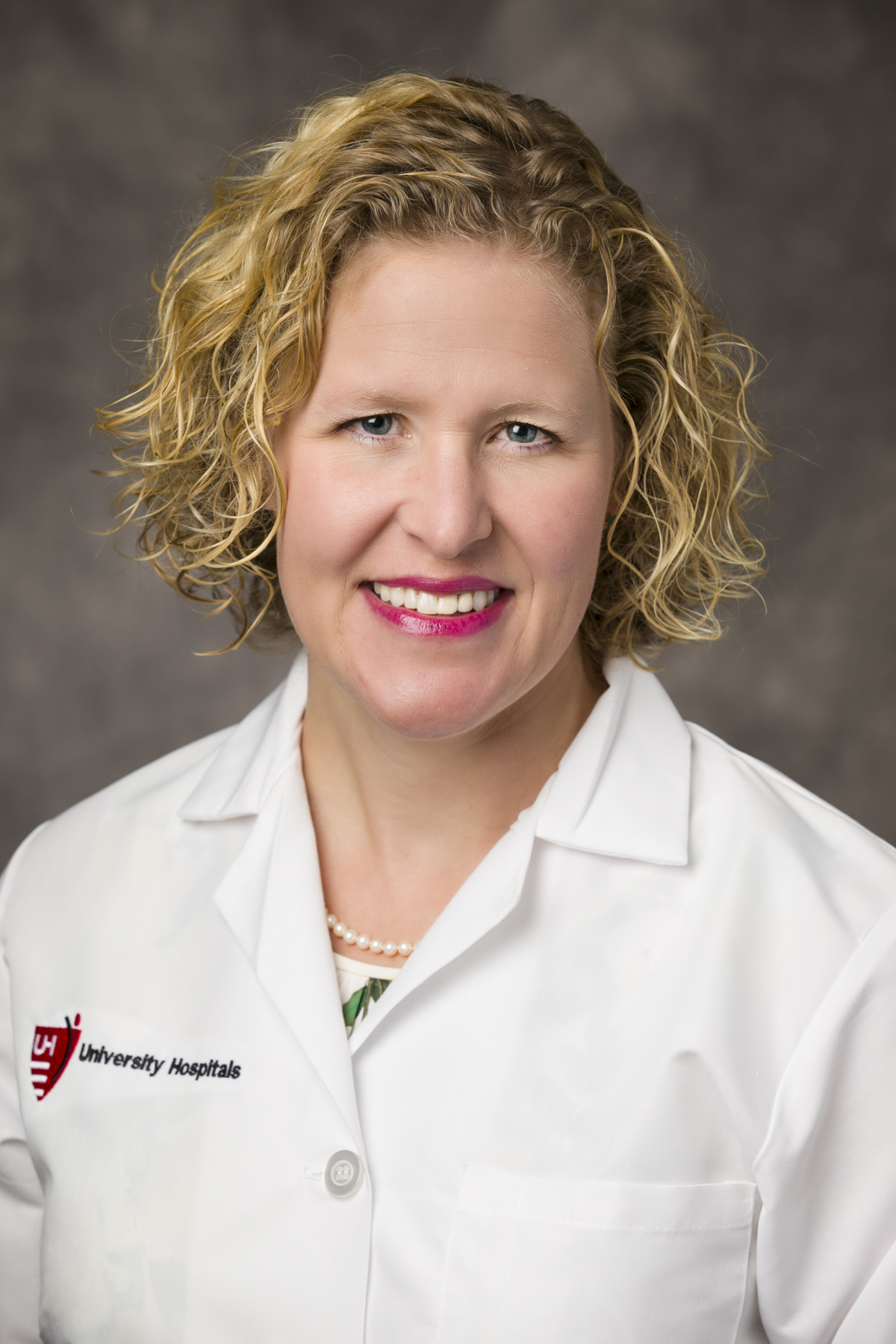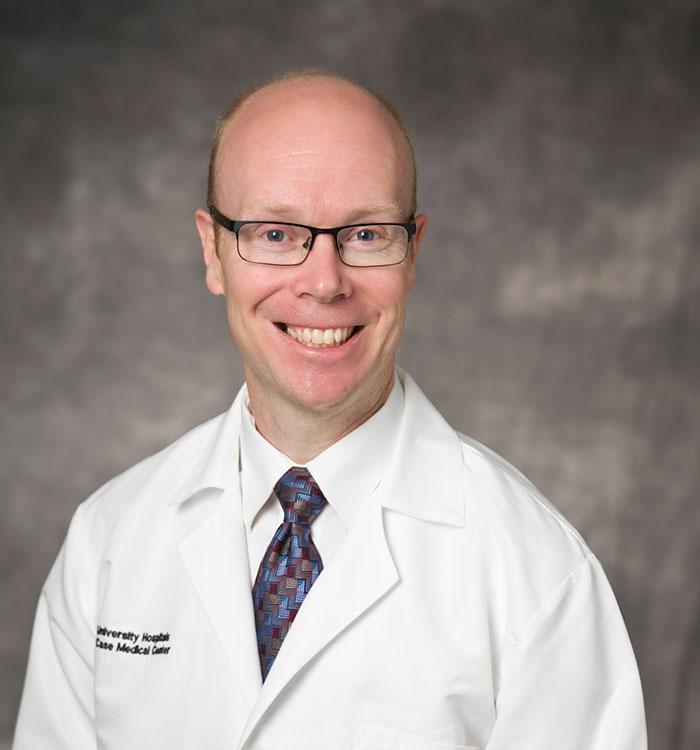Sparking Interest in Otolaryngology
January 18, 2021
ENT medical student program makes an early impact on School of Medicine students
Innovations in Ear, Nose & Throat | Winer 2021
 Sarah Mowry, MD
Sarah Mowry, MD Todd Otteson, MD
Todd Otteson, MDSarah Mowry, MD, FACS, is often asked by academic peers why University Hospitals’ ENT med student mentoring program is so successful.
“At conferences, people will ask me, ‘What are you doing that you have so many applicants to ENT residency?’ says Dr. Mowry, the Program Director for ENT Residency, and Associate Professor at Case Western Reserve University School of Medicine, sponsored by University Hospitals Ear, Nose & Throat Institute.
The question doesn’t surprise her. UH ENT faculty consistently inspire more medical students to pursue ENT after training at CWRU School of Medicine than comparable programs. We also have a higher percentage of students who match into ENT residency programs at other institutions.
The key, she says, is introducing students to ENT as early as possible in their medical education.
“The students have all heard of ENT before they start their third-year rotations, so that speaks a lot to our faculty and the early interaction students have with them,” Dr. Mowry explains. “Many students know that they're interested in ENT during their first and second years, and so they start to tailor their medical school experience — and especially their research experience — in that direction.”
FIRST IMPRESSIONS
As one of the Deans of Student Affairs at the CWRU School of Medicine, Todd Otteson, MD, MPH, FACS, FAAP, meets with every student who is interested in a surgical subspecialty, including ENT, to help them make connections in the department — ideally starting in their first year. “I’ve worked with students on clinical mentorships, research projects and more, so it’s nice that we have contact with them early on in their program,” he says.
Year one is also when ENT faculty deliver lectures on head and neck anatomy, and students can start to participate in the faculty-led ENT interest group, observerships and shadowing in the clinical setting. Many first-year students also express an early interest in research and will assist on a project informally before their second year, when their official research requirement starts.
Students have many opportunities to participate in research through the ENT department, ranging from data collection and interpretation to helping generate potential research topics. Student-researchers are also invited to the department’s monthly research meeting, where they can discuss research they are working on with faculty, share ideas and ask questions.
“It’s a win-win because they can be more productive researchers, and we have more time to spend with them researching and mentoring,” says Dr. Otteson, who is currently the faculty mentor for four students doing ENT research for their MD thesis for medical school graduation. “It’s also nice for us to be around the curiosity and innovative questions of students, which makes us all a little bit better."
By providing feedback from 2019 curriculum, for example, second-year medical students inspired faculty to introduce the first small-group ENT case for student discussion. This year’s pediatric ENT case was written by Dr. Otteson, who is also Division Chief, Pediatric Otolaryngology at UH Rainbow Babies & Children's Hospital, and Associate Professor at the School of Medicine.
PREPARING FOR CLINICAL PRACTICE
In their third and fourth years, CWRU School of Medicine students move into clinical rotations and a more advanced curriculum. UH offers a diverse group of practice sites where students can hone their skills in ENT.
“Students visit our main campus, but they may also come to outlying clinics and satellite operating rooms,” explains Dr. Mowry, a board-certified otolaryngologist and fellowship-trained neurotologist at UH Cleveland Medical Center. “They can also participate in clinical programs and rotations at Veteran’s Affairs and at MetroHealth Medical Center.”
Fourth-year ENT curriculum focuses on applied anatomy with a more hands-on component: cadaver dissection of head and neck anatomy. Students who choose to do ENT in their final year will also complete a four-week acting internship in ENT, and they can elect to do an additional month of research in the department.
Once students have decided on ENT, Dr. Otteson meets with them individually and as a group. “We discuss their application for residency and the interview process and we pair them with a faculty mentor,” he says. “We feel like the earlier we make those connections the better.”
Through all four years, ENT faculty work closely with students who are exploring which medical specialty or subspecialty they’d like to pursue. These interactions range from liaisons with the ENT interest group to individual and group mentoring throughout the year. Although ENT is one of the smaller departments at the CWRU School of Medicine, it recently had the most faculty participate in the school’s mock interview program to prepare students for residency interviews.
“Students have early and unfettered access to faculty and clinics as early as their first year,” Dr. Mowry says. “When they are in the operating room, mentoring or doing department research, that learning process all happens directly, one-on-one, with our ENT faculty.”
Of course, the learning experience for CWRU School of Medicine students looked a bit different in 2020. Because of COVID-19, students weren’t permitted to do on-site clinical rotations in March or April. Hospital access remains restricted for first- and second-year med students who want to participate in shadowing experiences or more organized observerships. And, for now, medical school students are unable to complete acting internships outside of their home institutions. To give students exposure to the field, a virtual ENT elective was created. Using this curriculum the students were able to continue their education using a variety of resources from across the internet.
Still, the goal of the ENT department is unchanged: to have exposure to ENT start early and have faculty participate often. Lately, that means using Zoom video conferencing when learning can’t happen in person.
“Students worry, ‘If we’re not shadowing, how are we going to have exposure to different specialties and subspecialties?’” Dr. Otteson says. “We’re using Zoom to have research meetings, record lectures and work on projects remotely. We’ve also tried to have specialty panels so they can learn and gain exposure to the specialty, and get to know the faculty through Zoom.”
The department is also using Zoom meetings to connect with prospective ENT residents who want to learn more about the school, faculty and current residents. “We want to showcase what a great opportunity we have here,” Dr. Otteson says. “It’s a very robust experience where we get to know the students well, and they get to know us. Our students know that we care about them and that we want them to be successful.”
Even with the challenges of COVID-19, interest in ENT remains is on the rise among CWRU School of Medicine students. This year, the department has 12 students applying for the ENT residency program, a 100% increase over last year, he says.
Several industrious med students even used their extra downtime to create a new virtual elective for ENT. They developed the elective by finding and collating free, web-based resources on topics related to ENT, and then worked with ENT faculty to structure the curriculum.
“I was so proud of them for using this time to put together something that helps the greater medical student community,” says Dr. Mowry, who helped write and publish a paper about the virtual curriculum.
The ENT elective was approved by the registrar as a 2-week virtual credit and is now available for students nationwide.
Dr. Otteson notes, “It was a great collaboration by the students that demonstrated their interest in otolaryngology as well as education: to create this elective and spark interest in ENT when they couldn’t be in a clinical setting.”


